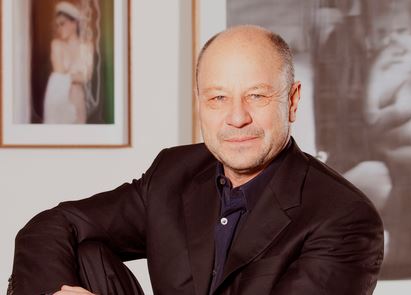Exhibiting your collection: Thomas Olbricht’s view

Portrait Thomas Olbricht © me Collectors Room Berlin, Photo Jana Ebert
Most serious art collectors reach a point where they consider exhibiting their work. Individual pieces can be loaned for exhibitions relatively easily, but a significant number of collectors take a greater step forward and create a permanent exhibition space for their collection.
One such collector is Thomas Olbricht. His collection is on permanent display at the me Collectors Room Berlin, the exhibition space of the Olbricht Foundation. As well as showcasing Olbricht’s collection, the me Collectors Room also provides a platform for international private art collections to present themselves.
Born in 1948, the doctor of medicine and endocrinologist, Olbricht has put together one of the most extensive private collections in Europe. The works in his collection include pieces by Thomas Schütte, Eric Fischl, Franz Gertsch, Cindy Sherman, Marlene Dumas and Gerhard Richter. Despite the inclusion of so many great names, his collection grew from humble beginnings.
“I always collected things that fascinated me in a certain way,” he says. “In my childhood stamps and little toy cars got my attention, later on in the ‘80s I more and more focussed on contemporary art. My great-uncle Karl Ströher, who had an extensive collection of art, definitely awakened the interest in collecting art. I started with works of local artists, then post-’45 German art, and for the last twenty years also international art in all forms and media.”
Olbricht and his wife have a great interest in kindling a love of art among children and young people. In 2011 they founded the Olbricht Foundation with the mission of advancing contemporary art, contemporary artists, and curators and to generate public interest in art, especially among children and teenagers.
“In the me Collectors Room Berlin, nearly every day before opening, we arrange workshops for schools and kindergarten groups,” he says. “They take place in the exhibition, are animated to share experiences and we try to stimulate their imagination and creative thinking by practical work.
“However, we won’t simply accumulate knowledge. As in our exhibitions we try to show things beside each other that would likely never be shown together. We organize our children’s program in this analogous way and we try to communicate with all senses and connect knowledge in an interdisciplinary way.”
A driving force behind the creation of the exhibition space was the growing number of requests Olbricht received for loans of his work.
“I realized that there is a public interest to get in touch with the works I own,” he says. “I was very happy about this development and that is why I got the idea to make the whole collection visible.”
However, he resolved to go one step further: with me Collectors Room Berlin he set out to create a space not only for his own private collection, but also for other international private collectors with whom the Olbricht Collection has collaborations and exchange exhibitions.
“Our current exhibition is one of those collaborations with the Italian collector Patrizia Sandretto Re Rebaudengo. Under the title ‘Stanze/Rooms’ she is presenting parts of her collection at me Collectors Room, after I was a guest at her Fondazione in Turin with the Gerhard Richter prints in 2013,” he says.
He also created the Wunderkammer Olbricht, a ‘cabinet of curiosities’ reminiscent of the collectors’ rooms that became fashionable in Renaissance and Baroque times as places to display precious artworks, rare phenomena of nature, scientific instruments, objects from strange worlds, and inexplicable items.
“Nowadays the Wunderkammer provides an insight into the past and still manages to fulfil its original intention of some two to five centuries ago: to transport the visitor into a realm of sheer astonishment,” he says.
In the Olbricht Foundation and the me Collectors Room, Olbricht has managed to make his collection accessible in a way that is truly in line with his ideals. For all that he has achieved, however, he has no grand ideas about his legacy.
“I collect only for myself, for my life, based on my decisions. The next generation has free will to do what they want with it.”
Similarly, he believes that the decision about whether – and how – to show your work is a personal issue for each individual collector.
“Every single one is different and so every collector must find to his individual concept for representing the collection in agreement with their own philosophy,” he says.